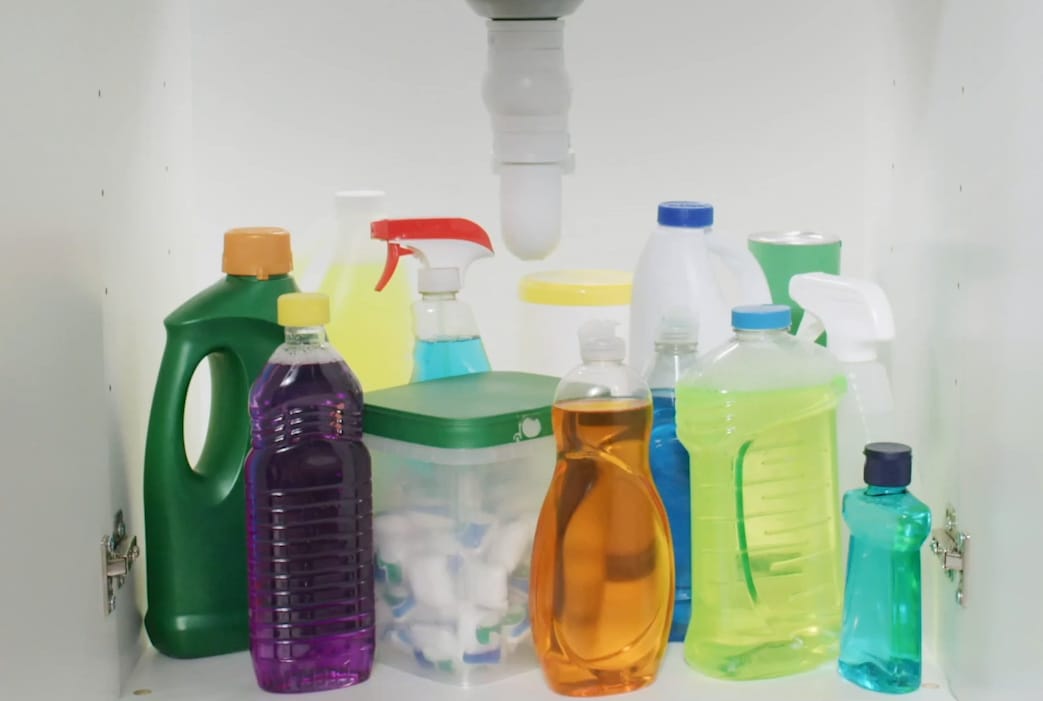
Toxic Cleaning For Thought . . .
Although Powerizer is marketed mostly for household cleaning, there is no reason it can't be used for industrial and commercial applications. Recently Powerizer Complete earns USDA Certification with 70% biobased content. USDA's BioPreferred Catalog in 4 Categories, Laundry, Dish, Multi-Purpose Cleaners, and Carpet & Upholstery Cleaning.
It Is A Big Deal
However, the BioPreferred program doesn't mean chemicals aren't a part of the ingredients in product formulations, it merely means the ingredients found in our product are a much safer choice for your family and the environment.
The task of cleaning your home does not require training and testing which an industrial, or restaurant employee would be required to pass. Hazards signs are not posted in your broom closet, either. Yet, bleach, ammonia, and other common chemicals like peroxide are standard products found in today's households. Each used separately for cleaning are effective and useful; however, if bleach and ammonia mix, they can become deadly.

Let's face it; chemicals are in everything. Check out this banana chemistry poster that displays 82 primary chemicals in one single banana. Powerizer is a detergent and cleaner disrupting the market not just because of the efficacy but also because it's conquering dirt, soap scum, grease, and even toilet matter using no harsh chemicals, no fillers, and no dyes. Replacing needless, redundant cleaners, and the wasteful containers they come in.
We decided to address concerns with the toxicity in everyday cleaning products. Recently, a widely publicized incident made headlines when mixing cleaning products at a popular food chain resulting in one (1) death and injuring ten (10) others. The event occurred when an employee lost his life due to mixing two (2) popular industrial cleaning products, creating a fatal toxic chemical reaction. In this article, written by Chemical & Engineering News, they explain how the mixture dissolves the tissues in the lungs, which makes them unable to remove the gas; instead, it forms liquid in the lungs, causing chemical pneumonia.
If you're concerned your cleaning products may be making you sick, the first sign is feeling dizzy, light-headed, or a sudden onset of a headache. You may also experience burning of your eyes or skin. It's common knowledge that mixing chemicals can cause allergens, irritants, and sensitizers, triggering asthma and possibly COPD. In 2003, the American Thoracic Society published a consensus statement that concluded: approximately 15% of both asthma and COPD are likely to be work-related". [1]
Powerizer is a multi-purpose cleaner and detergent that effectively cleans everything dirty, so there is no need to use additives in the laundry, dish cleaning, or to mix multiple products to tackle household chores. We believe less is more, and additives are only complicating the chemistry to your already complicated list of popular cleaning products.
In a recent focus group performed by our marketing team, consumers discussed reservations about cleaning with one product. We found that individuals have become accustomed to purchasing separate cleaners to effectively clean, but failed to realize materials such as ceramic dishes, bathroom tile, and flooring cross over into multiple areas of the home. So, the task is how do we convince consumers that one (1) product tackles so many areas in the house, from shower glass doors, windows and wine glasses that are all crystal clear it shouldn't require three different cleaners. Aren't all three surfaces made of glass? It should make sense to eliminate the waste, and the guesswork out of adding boosters to increase the efficacy of products.

Instead, consumers are adding fabric softener to your already scented laundry detergent and then sprinkling in scent boosters, which are only adding more residue to rinse away and increasing their chances of being exposed to allergens. Mixing bleach with other substances may result in acute irritant induced asthma. A Color Safe Oxygen Bleach uses Hydrogen Peroxide or Sodium Percarbonate. Its common name is Soda Ash. Regular bleach uses Hypochlorite, which is the active ingredient and works fast and can lighten the fibers and even break them down. Adding Ammonia to bleach creates Chloramine, another toxic gas. Mixing bleach with Hydrogen Peroxide creates an Oxygen gas that can explode.
Because there are so many different laundry detergents and fabric softeners, whether consumers follow dosage instructions or not, mixing them with other additives creates varying reactions. Do the benefits of lingering scent from floor cleaners and laundry products outweigh the risks?
Other industries are steadfast in figuring out how to create new and improved multipurpose products. Cosmetic companies are formulating skin moisturizers that reduce fine lines, fight pimples, which includes a sunblock and available in 20 different shades. Why shouldn't your detergent be able to clean your tile and ceramic plates, wine glasses, windows, shower glass doors, microfiber sheets, and your microfiber couch? Wouldn't it be nice to use only one (1) product that does it all?
Consumers shouldn't feel the need to mix products to get better results. Doing so can be counteractive to the benefits of one (1) product. After cleaning everything dirty, the last step for your detergent should be for it to safely rinse away, leaving no residues or overpowering scents. Powerizer accomplishes that every time.

[1] J. Balmes, M. Becklake, P. Blanc, et al.Environmental and occupational health assembly, American thoracic society. American thoracic society statement: occupational contribution to the burden of airway disease. Am J Respir Crit Care Med, 167 (2003), pp. 787-797

